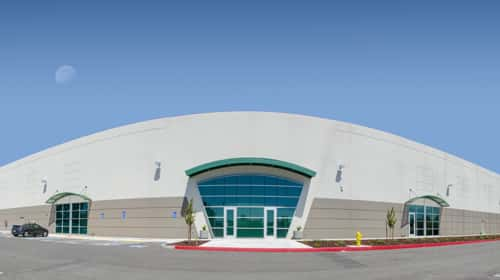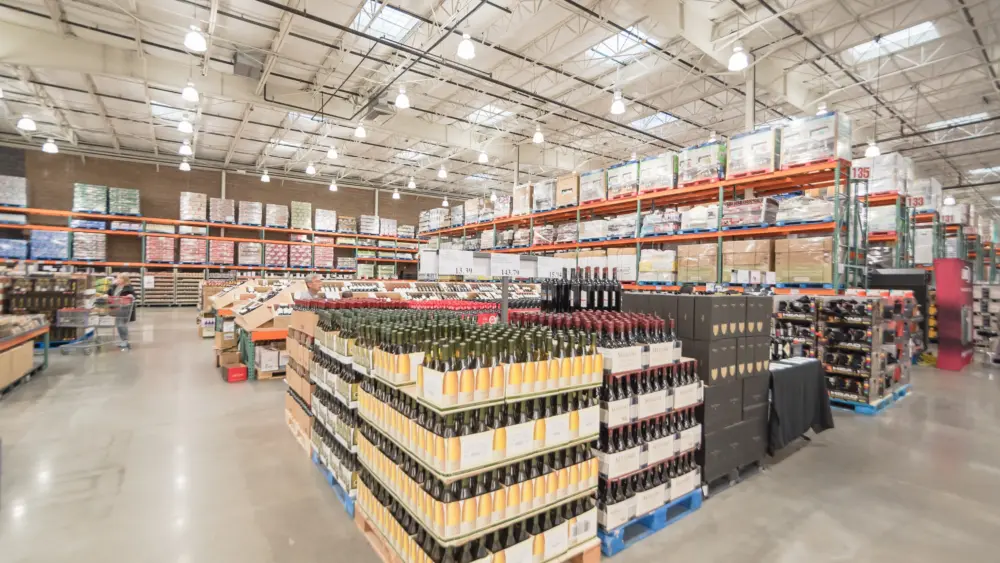 For a small county on Northern California’s Pacific coast, Sonoma has a remarkably diverse economy. Alongside pastures and vineyards, technology spurs medical advances, and makers are thriving. It’s an environment where manufacturing has the potential for growth, creating jobs and contributing to a strong economy, but finding space for businesses to expand is a challenge. Sonoma’s 1,768 square miles equal 12 million acres, and out of that space, 4,000 acres are allocated for industrial development, and much of it is already occupied. Established business parks account for 3,844 acres, so less than 1,200 acres remain for future development, making a shortage a real possibility.
For a small county on Northern California’s Pacific coast, Sonoma has a remarkably diverse economy. Alongside pastures and vineyards, technology spurs medical advances, and makers are thriving. It’s an environment where manufacturing has the potential for growth, creating jobs and contributing to a strong economy, but finding space for businesses to expand is a challenge. Sonoma’s 1,768 square miles equal 12 million acres, and out of that space, 4,000 acres are allocated for industrial development, and much of it is already occupied. Established business parks account for 3,844 acres, so less than 1,200 acres remain for future development, making a shortage a real possibility.
Al Coppin, president and co-owner of Keegan & Coppin Company, Inc., a Santa Rosa firm specializing in commercial real estate, predicts that Sonoma will begin to run out of of land for industrial development in 16 years. “Without allocations of 50 to 75 acres a year, the county stands to lose companies that want to expand and won’t be attractive enough to draw future businesses,” he says. Meanwhile, competition for space is already tight, with a vacancy rate of 5.6 percent in 2016, which is well below the 10 percent threshold that’s most desirable for a balanced market. “You need an attractive modern inventory of buildings to encourage companies to locate and continue to grow and expand locally,” says Coppin. “You need diversity from quality companies, not just those that are agriculture-based,” he adds, explaining that when the variety of facilities is limited, rents tend to be higher, and potential occupants don’t have choices.
Coppin finds that the greatest demand is for one or two-story buildings with flex space, which can accommodate activities such as storage, inspection and distribution, as well as offices. “It’s where physical activity actually occurs,” he says, giving manufacturing, assembly, production and lab work as examples. “What you need for flexible buildings—office/industrial buildings—is business parks,” he adds, emphasizing the need for new developments. Some existing buildings are being repurposed, but that takes care of only a fraction of the need, he points out. “You recycle space, but you need to add to that space for the economy to grow,” he explains, pointing out that without substantial development of commercial properties in the past, large companies such as Agilent (now Keysight Technologies) and Medtronic wouldn’t be in Sonoma County. “It takes effort and work to maintain a good prosperous community,” he says, pointing out that the development of new business parks allows the creation of new businesses, which, in turn, create jobs. Consequently, he believes it’s essential to find ways to accommodate future growth. “Otherwise companies won’t expand here. They’ll go elsewhere,” he says.
New approaches
The first business parks appeared in the 1950s, and they were usually located in the suburbs, close to main roads, where large tracts of space were available and costs were lower. Several years ago, they began appearing in downtown areas as well, but the suburbs are still a draw, and developers are adapting to change by building new complexes that differ significantly from those of the past, often including amenities such as parks and jogging paths to create a pleasing environment for workers.
Cader Corporate Center, located off Lakeville Highway in southeast Petaluma, is one of Sonoma County’s newest developments. New York Life developed the property as the manager of a comingled investment fund made up of union pension-fund investors, explains Ross Berry, senior director at New York Life Real Estate Investors for the San Francisco Bay Area. The company had recently completed an industrial project in Napa and was aware of the demand for commercial properties in the North Bay counties. The goal was to put participants of its union pension fund investors to work on construction projects, as well as investing in real estate.
Working with the City of Petaluma proved productive. “Petaluma is a strong advocate for conscious and responsible development,” says Berry, observing that the city’s requirements helped contribute to the creation of a high-quality development that won a Top Project architectural award in 2016. The three-building campus has design features such as skylights to provide natural light, solar panels for energy, a fan and vent system that makes use of cool nighttime air to lower the temperature in areas that aren’t air conditioned and its own recycling facilities, all of which lower operating costs. In addition, it has bicycle parking and showers for the convenience of employees. It took about a year to get through the permitting process, and then construction took nine months. Berry credits Devcon Construction, which is headquartered in Milpitas but has an office in Petaluma, for its work in building the project efficiently. “Our contractors did an exceptional job,” he says.
The center was fully leased well before its completion in December 2016. “We had a lot of interest from companies that were Petaluma-based, as well as businesses in Marin and Napa,” Berry reports, and, ultimately, the spaces went to four Petaluma businesses that needed space to expand—Clover Stornetta (now Clover Sonoma), Hydrofarm, Scott Laboratories and Tomales Bay Foods. Berry credits Trevor Buck, Steve Leonard and Brian Foster of commercial real estate broker Cushman & Wakefield’s Larkspur office with finding the tenants. “They had a strong knowledge of the many businesses through the North Bay area,” he says.
Buck, a senior managing director at Cushman & Wakefield, reports that the company already had clients whose requirements they were trying to fill, and the Cader Corporate Center was ideal because it offered infrastructure that existing buildings didn’t have, such as clear height and dock loading and provided space in a market with limited options. The industrial project at Cader Corporate Center was a project brought together between New York Life and Cushman & Wakefield, using relationships in the market and development capabilities to meet the specific needs of market demand.
“We were working hand-in-hand,” he says. “We had five different tenants looking for large blocks of space as well as trying to find solutions that had modern clear height, expansive parking areas and dock-high loading for distribution. Scott Laboratories, the first tenant on the project, was looking to combine three different locations.” Tomales Bay Foods, the parent company of Cowgirl Creamery, which was sold to the Swiss dairy company Emmi in 2016, already had production facilities in Petaluma and Point Reyes Station. “This is going to replace most of their production,” he says. “Clover Stornetta is a historic business that has been in Petaluma for many years,” he adds, and operating a refrigerated storage facility for dairy products in their new space allows expansion of operations at the company’s other locations. Many food products come from Sonoma County, and as a result, the food and beverage industry is growing and has a huge need for new space, Buck reports. A handful of national companies want to be in the North Bay. In addition, the cannabis industry is playing a role in the Santa Rosa market. Says Buck, “The marijuana market is pushing the demand, [and] pushing traditional businesses into surrounding markets.”
He believes several factors make Sonoma County a desirable place to establish a business. Those factors include a large labor pool and a relatively low cost of living, and affordable residential developments that will give low-income workers a place to live are in the works. Employment projections show an increase in the manufacturing sector in the next three years. However, inventory of commercial properties, which would create new jobs, is shrinking, and creating uncertainty beyond that time frame. Buck reports that while developments are underway in Rohnert Park and in the Santa Rosa Airport area, only two parcels remain vacant in Petaluma, one on Pineview and another on Cader Lane at South McDowell Blvd., which was recently sold to a buyer who will be the user. “It’s unlikely that you’ll see any new industrial development coming on the market in Petaluma,” he says. “However, with new developments in Rohnert Park, we should see a continued flow to quality as newer projects meet the demand of today’s tenants.”
Trending
Ben Stone, executive director of the Sonoma Economic Development Board (EDB), believes Cader Corporate Center is a good example of the kind of space a business needs to grow. “Most of our businesses are small, and they grow over time if they’re successful,” he says. He gives Medtronic Inc. as an example. The global medical technology company purchased a small company in Santa Rosa for research and development. Eventually, Medtronic expanded to produce medical devices and became one of the county’s largest employers, making it a success story, illustrating the ongoing need for space to expand.
For healthy economic growth, Sonoma County needs a variety of diverse businesses, both large and small, and smaller companies are in keeping with the current trend. “We are seeing an increasing number of microbusinesses, including specialized services,” says Stone, and he adds that established companies are also finding ways to operate that don’t require as much space. For example, Alcatel-Lucent, the first start-up in Redwood Business Park in Petaluma’s Telecom Valley, closed its offices in 2015, announcing that its employees would work from home. Stone explains that technology is revolutionizing production, and the result is diversity and miniaturizing. He offers the example of a reader downloading a book onto a tablet instead of purchasing a hard copy to show how the publishing business has changed. In addition, many businesses today don’t require a lot of office space, because employees are “hoteling”—finding a space to work wherever they might be and checking in at the office once a week.
Strategies
Many large production activities can’t be downsized, however. That means competition for new commercial space will increase, given the low vacancy rate, demands from the food and beverage industries, a substantial entry of cannabis into the market, and more. Planning for the future business growth is therefore critical. Stone believes local planning departments will look ahead, identify emerging trends and make changes to accommodate them. Allocating more space for industrial or commercial use in cities and the county is one possibility.
Reconsidering environmental restrictions and finding innovative approaches to land use that recognize environmental priorities is another possibility. “It will take considerable study, but I think it’s something that would be possible over time,” he says.
The EDB tackled business growth in the NExT Economy Project in 2014, when 40 individuals from eight key economic clusters met to discuss ways for the county to move forward. Their recommendation for potential action in the technology, research and development and manufacturing sector was to “build support for public policy that enables growth in technology and manufacturing.” Perhaps most significantly, they examined real estate trends, but focused on workforce housing and the needs of small businesses—such as “Bou-tech” firms, collaborative workspaces and incubators—rather than addressing the need for large-scale commercial development. But that is yet to come since housing is the county’s most pressing need. Industrial development is part of the NExT 2.0 Taskforce Structure, which includes manufacturing and technology. Next efforts will help inform a new strategic plan for the economy. “We’ll be looking at this for Sonoma County and make recommendations to city and county offices,” says Stone.
Meanwhile, the EDB’s Industry Insider, Finance, Real Estate & Creative Industries Industry Report, 2017, reports that the shortage of vacant commercial space has resulted in a building spurt. The Museum on the Square is the first new office complex in downtown Santa Rosa in more than 10 years, and the competition between food and beverage makers vying for industrial space is providing encouragement for developers to invest in new projects. Such initiatives fill the short-term need, but may not address the lack of production facilities and/or space for commercial activity. Business evolves, and change is inevitable, so how much space companies are going to need in the future—and where they’ll find it—are big questions. And Sonoma County and a committed business community are intent on finding the answers.



